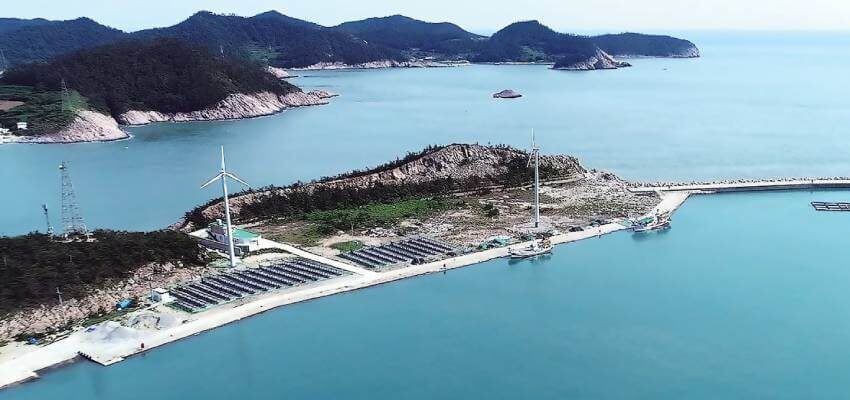Korea demonstrates DC distribution system on an Island
The energy efficiency of a Korean island’s power system improves by more than 10 % with a DC distribution system while maintaining reliability.

Image for illustration purposes
South Korea, Seogeochado: The energy efficiency of a Korean island’s power system improves by more than 10 % with a DC distribution system while maintaining reliability.
The current power system adopts AC transmission as the standard, so DC electricity generated from solar power, wind power and fuel cells is converted into AC, which is then converted back to DC through AC-DC converters installed in the home and mobile devices. Even under the assumption the conversion efficiency of each stage is on the high end at 90 %, Korea Electric Power Corp. (KEPCO) estimates a power loss of approximately 30 % occurs after undergoing three stages of conversion and reconversion.
To reduce the power loss that occurs during the conversion process, a DC system is proactively introduced by internet data centres, which consume considerable power.
In 2008, Lawrence Berkeley National Laboratory demonstrated a DC distribution system has the potential of using 28 % less energy than the typical AC system. In Korea, a DC-based telecom data centre also demonstrated a 13.2 % improvement in efficiency with the implementation of a DC distribution system.
The Seogeochado DC island construction project, conducted by KEPCO Research Institute, is currently the world’s largest DC distribution network demonstration project. In this system, instead of AC, DC power lines of 1500 V are constructed and DC generators—such as solar power generators, wind power generators, fuel cells and diesel generators—are interconnected for domestic electricity supply. In addition, LED streetlights, electric cars and charging stations are installed for residents in the region.
“KEPCO Research Institute plans to continue investing in the demonstration and standardisation of the DC distribution system,” a KEPCO official commented. “We aim to contribute to the government-driven solar power and hydrogen fuel cell projects.”
Source: T&D World




